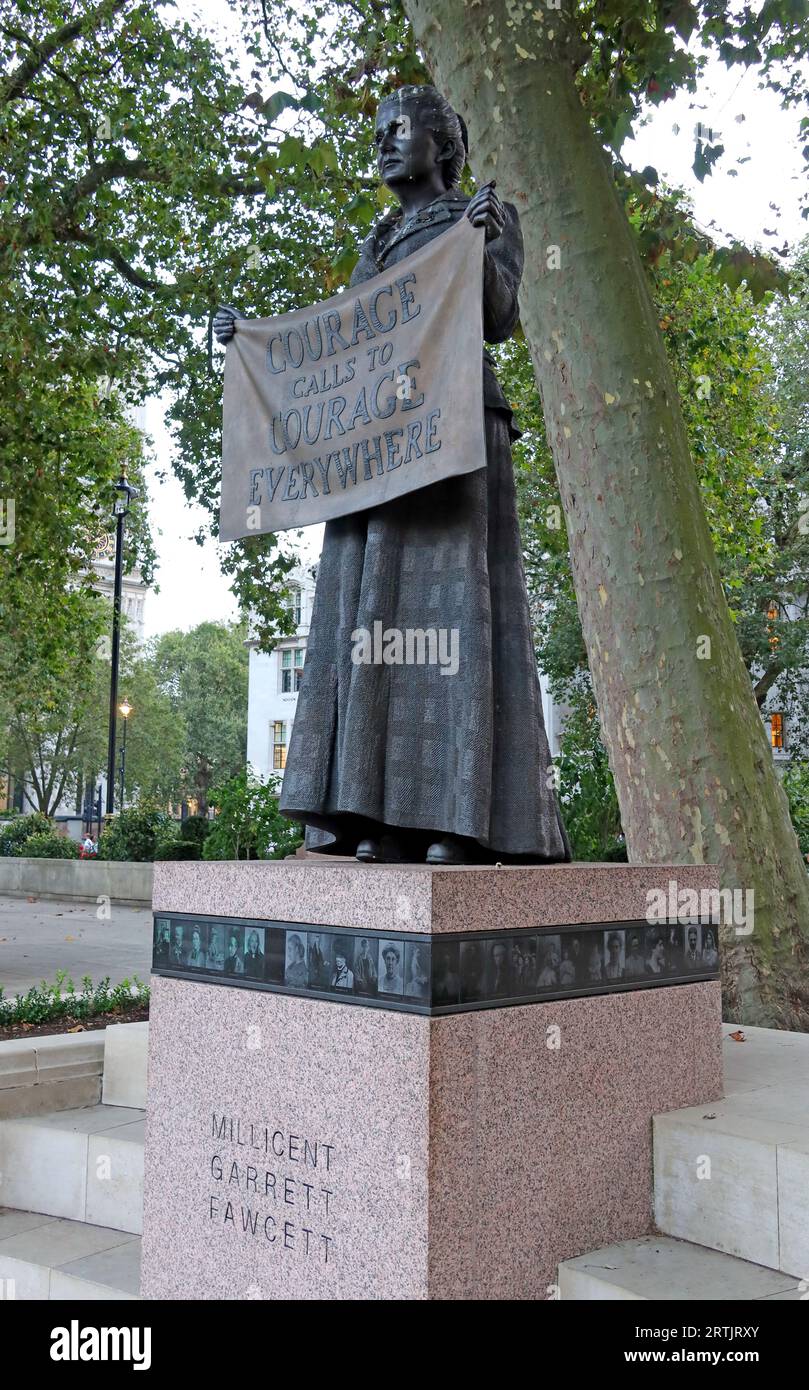Bronze Statue of British suffragist leader and social campaigner Millicent Fawcett in Parliament Square, London, England, UK, SW1P 3JX

Image details
Contributor:
Tony Smith / Alamy Stock PhotoImage ID:
2RTJRXYFile size:
53.4 MB (3 MB Compressed download)Releases:
Model - no | Property - noDo I need a release?Dimensions:
3408 x 5472 px | 28.9 x 46.3 cm | 11.4 x 18.2 inches | 300dpiDate taken:
6 September 2023Location:
Parliament Square, London, England, UK, SW1P 3JXMore information:
Dame Millicent Garrett Fawcett GBE (née Garrett; 11 June 1847 – 5 August 1929) was an English politician, writer and activist. She campaigned for women's suffrage by legal change and in 1897–1919 led Britain's largest women's rights association, the National Union of Women's Suffrage Societies (NUWSS), [1] explaining, "I cannot say I became a suffragist. I always was one, from the time I was old enough to think at all about the principles of Representative Government." She tried to broaden women's chances of higher education, as a governor of Bedford College, London (now Royal Holloway) and co-founding Newnham College, Cambridge in 1875. In 2018, a century after the Representation of the People Act, she was the first woman honoured by a statue in Parliament Square in 2018 by Gillian Wearing. Following a campaign and petition by the activist Caroline Criado Perez, the statue's creation was endorsed by both the Prime Minister of the United Kingdom, Theresa May, and the Mayor of London, Sadiq Khan. The statue, Parliament Square's first monument to a woman and also its first sculpture by a woman, was funded through the government's Centenary Fund, which marks 100 years since some women won the right to vote. The memorial was unveiled on 24 April 2018 Fawcett was born on 11 June 1847 in Aldeburgh, to Newson Garrett (1812–1893), a businessman from nearby Leiston, and his London wife Louisa (née Dunnell, 1813–1903). She was the eighth of their ten children